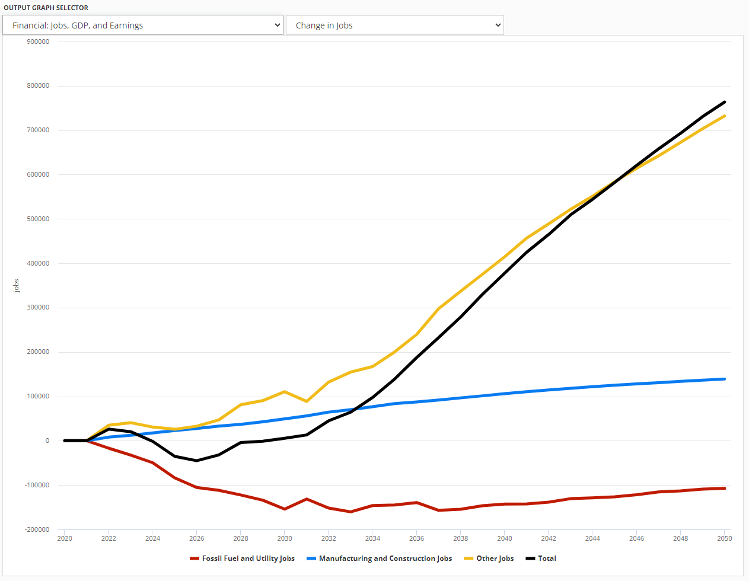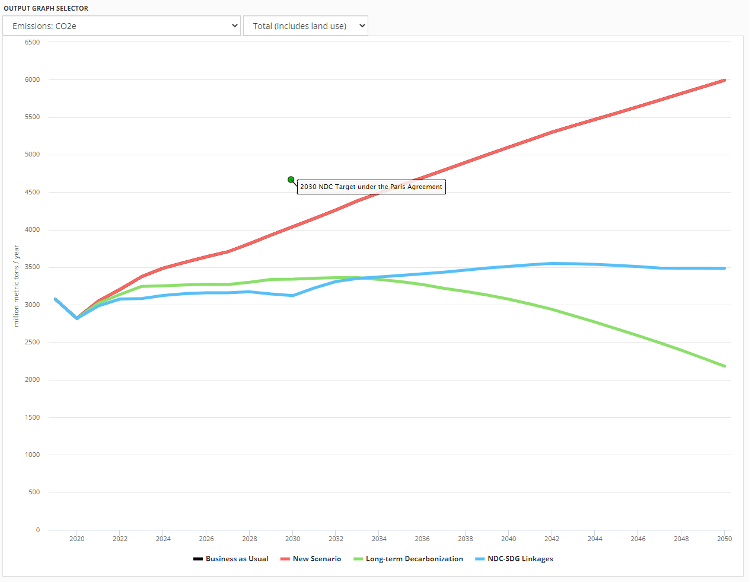By Olivia Ashmoore
Energy Innovation Policy and Technology LLC® has published updates to the Mexico and India Energy Policy Simulator (EPS) models and launched a new South Korea EPS model. The South Korea EPS was launched on the 3.3.1 platform in partnership with the NEXT Group. The Mexico model was upgraded to the newer 3.3.1 EPS platform to enable forecasting changes in jobs, gross domestic product (GDP), and public health impacts. Data for the India EPS model was updated to account for slower long-term GDP growth associated with the impacts from the COVID-19 pandemic.
South Korea EPS Model Launch
The South Korea-based NEXT Group and Energy Innovation® jointly developed South Korea’s first national-level EPS. South Korea is the world’s 12th-largest annual greenhouse gas (GHG) emitter, contributing approximately 715 million metric tons carbon dioxide equivalent (CO2e) in 2020.
The South Korea EPS model features a Business-As-Usual (BAU) Scenario that shows a 14 percent increase in economy-wide emissions by 2050 absent any additional policy action. Alternatively, an Example Decarbonization Scenario shows additional climate policies can meet the South Korea’s ambitious Nationally Determined Contribution (NDC) goals of reducing emissions 40 percent below 2018 levels by 2030 and reaching net-zero emissions by 2050. The three most effective policies in the Example Decarbonization Scenario are industrial electrification and hydrogen fuel switching, converting hydrogen production to electrolysis, and no new coal or gas-fired powerplants.

South Korea’s Example Decarbonization Scenario emissions reductions by policy.
Mexico EPS Model Update
The Mexico EPS has been upgraded to the EPS 3.3.1 model platform, which includes new detailed economic outputs and data updates. The updated model can now track cash flows, capital investments, changes in GDP, and employment changes by economic sector. In addition, the 3.3.1 version includes new public health impacts and updated energy consumption data.
The Mexico EPS comes preloaded with a BAU Scenario and an Example Long Term Strategy (LTS) Scenario. The Example LTS Scenario would reduce emissions 50 percent below 2000 levels, create approximately 760,000 jobs in 2050, and would increase GDP about 1 percent in 2050. The most impactful policies are an electric vehicle sales standard, industrial electrification and hydrogen fuel switching, and a clean electricity standard. The Example LTS Scenario would also prevent 7,300 premature deaths and 218,000 asthma attacks in 2050.

Change in jobs by sector in Mexico’s Example LTS Scenario.
India EPS Data Update
The India EPS model was updated to account for slower near-term energy and economic growth resulting from the COVID-19 pandemic, and also includes an updated GDP forecast from the India Energy Security Scenarios. The India EPS includes a BAU Scenario and two policy scenarios—the Long-term Decarbonization Scenario and the Nationally Determined Contribution-Sustainable Development Goals Linkages Scenario—that show emissions reductions compared to the BAU forecast.

India’s BAU, Long-term Decarbonization, and NDC-SDG Linkages Scenarios.
All these features and updates are now available online. The EPS Video Series provides an introduction to the model’s capabilities, and users can explore the tool using the EPS web interface.